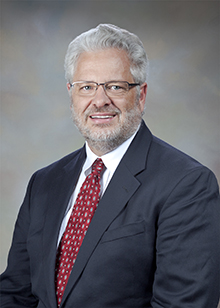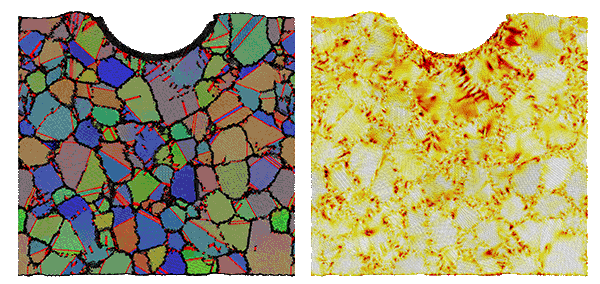TMS has honored Stephen Foiles of Sandia’s Computational Materials and Data Science department with its 2017 Cyril Stanley Smith Award, presented for outstanding contributions to the science and technology of materials structure.

He will receive the award March 1 in San Diego during the 146th annual meeting of TMS, the Minerals, Metals & Materials Society.
“Cyril Smith was a very cool person, a sort of a Renaissance man, one of those names you recognize. To get an award named after someone of that stature is humbling,” says Stephen (1814).
His manager, Amy Sun, says Stephen is well respected by his Sandia colleagues.
“His expertise in grain boundary dynamics (sdee image below) has broad applications ranging from understanding fundamental mechanisms of part failures to quantifying the impact of strength in metals with impurity,” she says. “Stephen always has a way of articulating complex, atomistic scale physics to concepts that engineers can relate to. I am not surprised that Stephen’s work is equally influential external to Sandia, and he is the perfect candidate for this well-deserved distinction.”
Stephen has worked for Sandia since 1983. He spent the first 17 years of his career with Sandia/California before moving to Sandia/New Mexico. He is a co-recipient of the 2016 Journal of Materials Science Cahn Prize with Christopher O’Brien (6233) and is a Fellow of the Institute of Physics and the American Physical Society.
While working in California, he and two Sandia colleagues — Murray Daw, now at Clemson University, and Mike Baskes, now at Mississippi State University — developed what’s now the standard formula for how atoms interact in simulations of metals. His contributions to the development of the atomic-scale simulations include both molecular dynamics and Monte Carlo methods, most notably in the development of interatomic potentials that underlie those methods.
Work revolutionized the field of atomistic simulations
Corbett Battaile (1814), who along with Brad Boyce (1851) nominated Stephen, says Stephen and his collaborators developed the Embedded Atom Method in the mid-1980s for simulating the properties of metals at the atomic scale. “That approach revolutionized the field of atomistic simulations, and it’s still used extensively today,” Corbett says, adding that Stephen has used that and other methods to make major contributions to understanding the properties and behaviors of interfaces and defects in materials.
Stephen’s years of work on the structure, thermodynamics, and mechanical properties of grain boundaries also have attracted interest. His recent studies of defects in metals and semiconductors focus on the variability of interfacial properties, including external conditions such as temperature and alloy composition. The research has been funded by the DOE’s Office of Basic Energy Sciences, Division of Materials Research; DOE’s Advanced Simulation and Computing Program; and various Laboratory Directed Research and Development projects.?
TMS, with headquarters in Pittsburgh, Pennsylvania, has nearly 13,000 members working in minerals, metals, and materials science from minerals processing and primary metals production to research and advanced applications.
